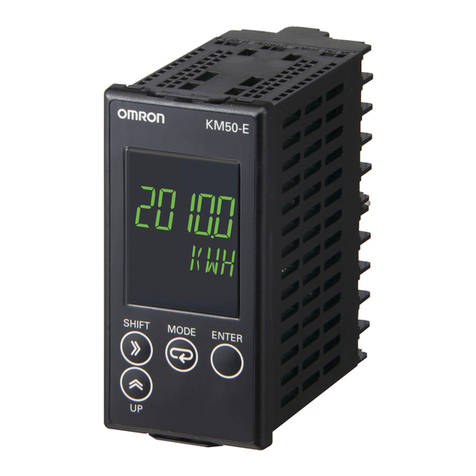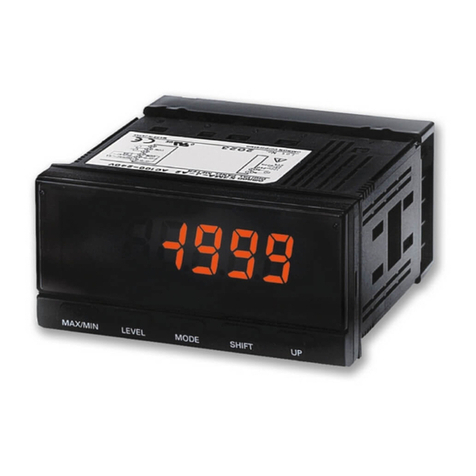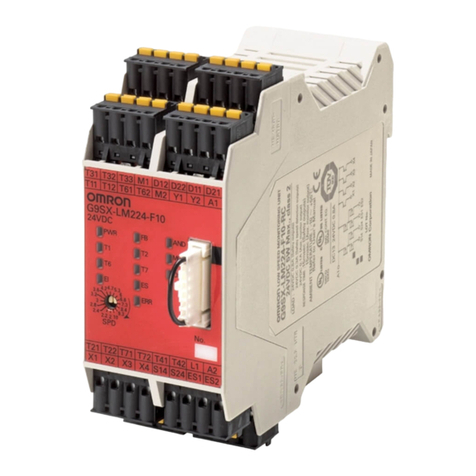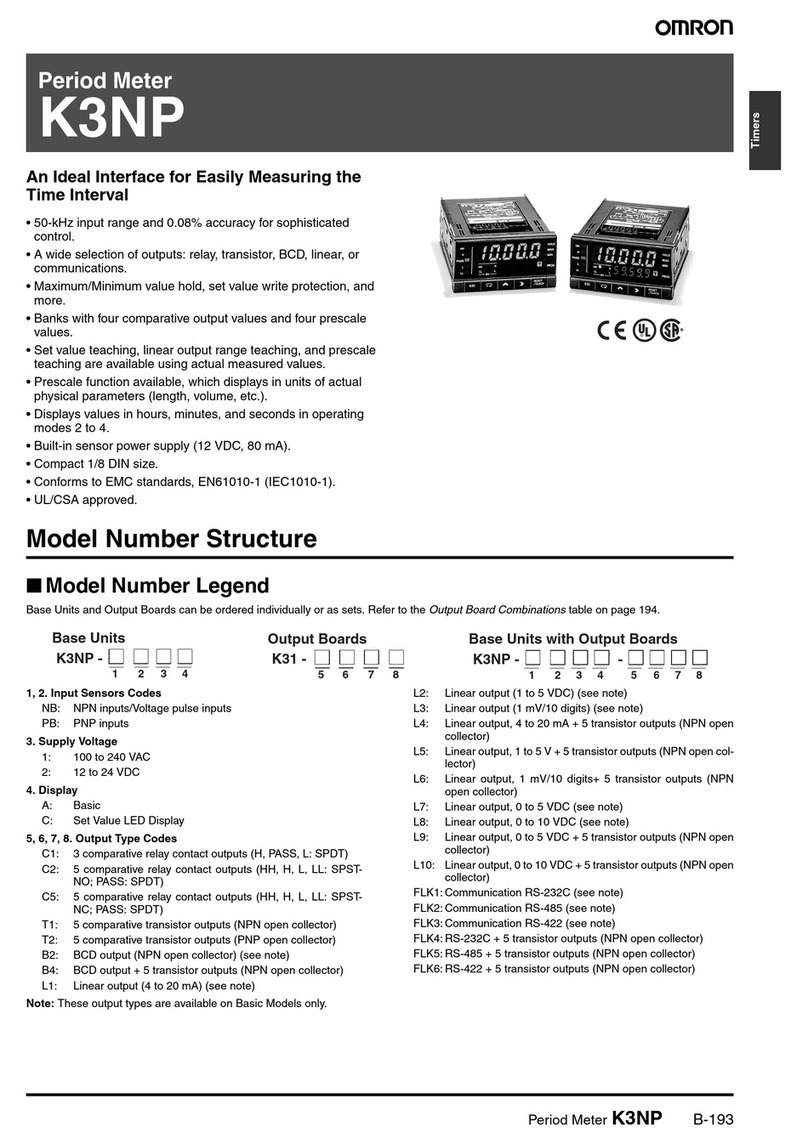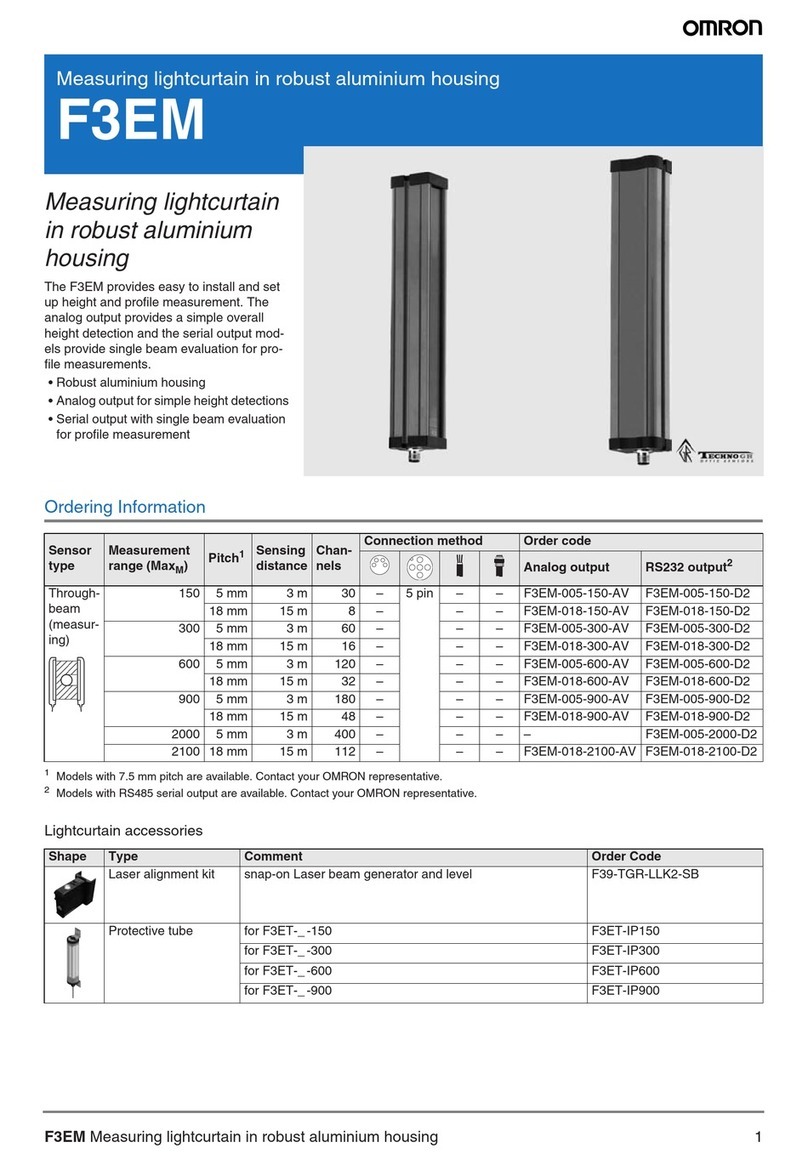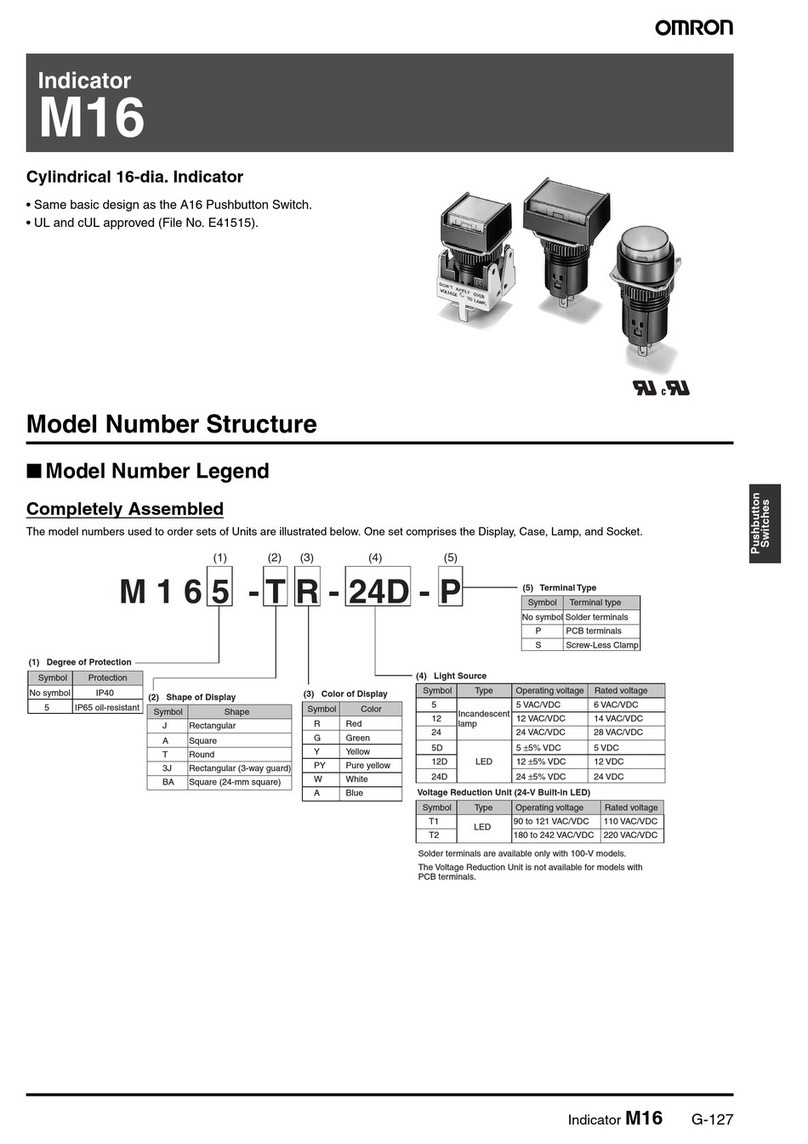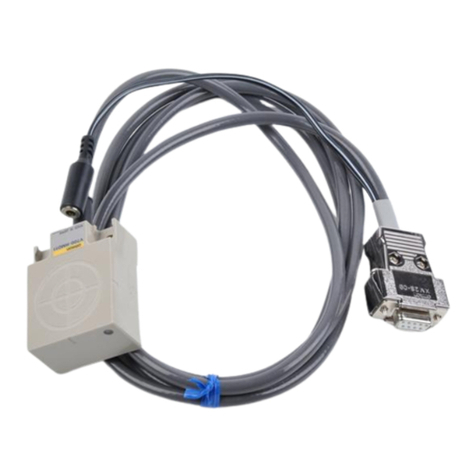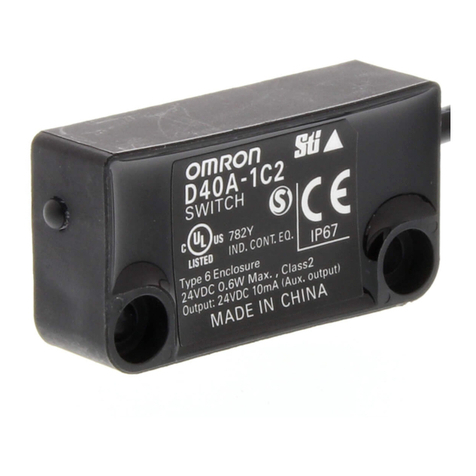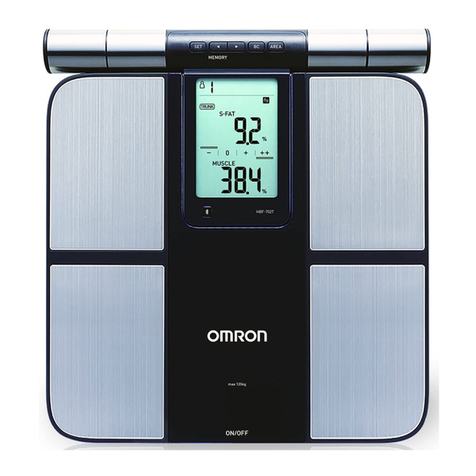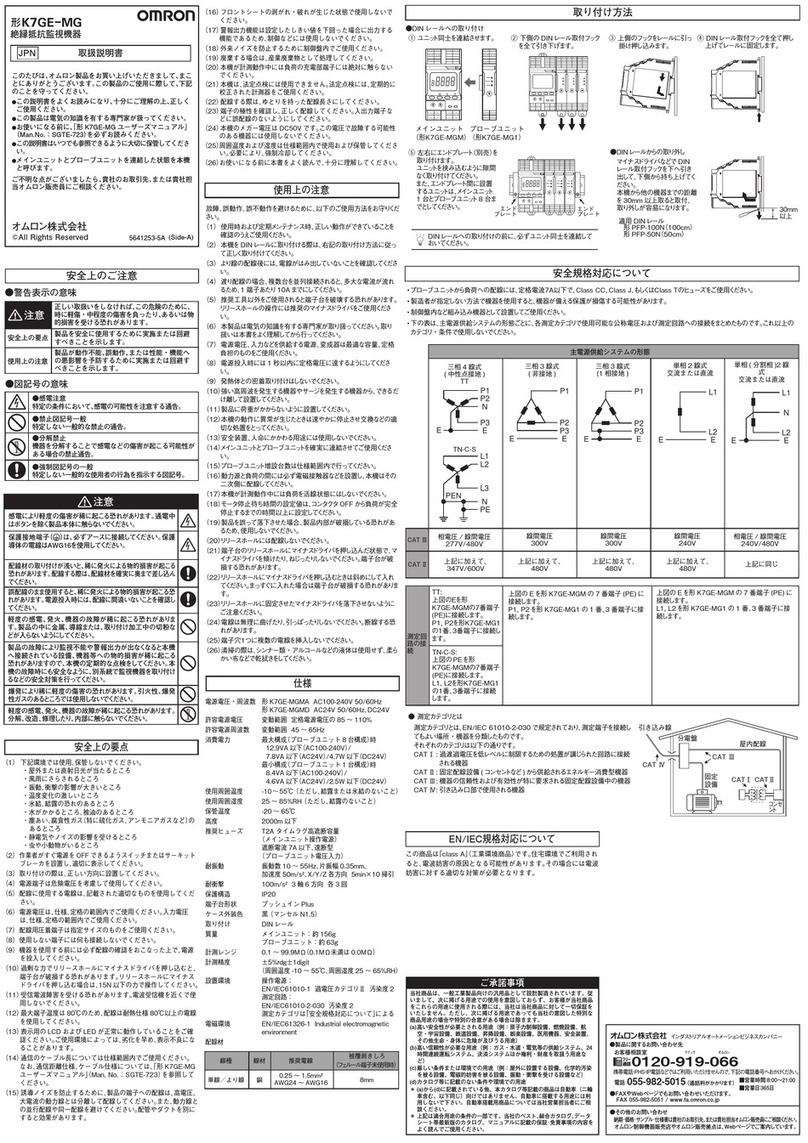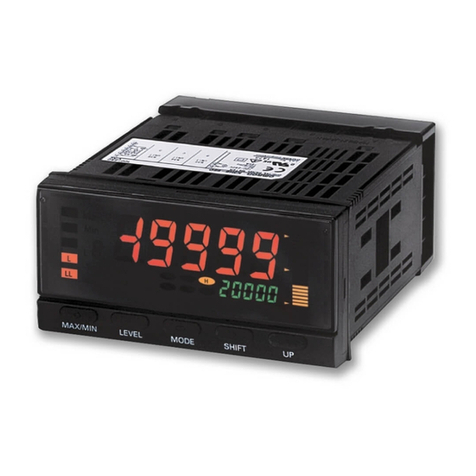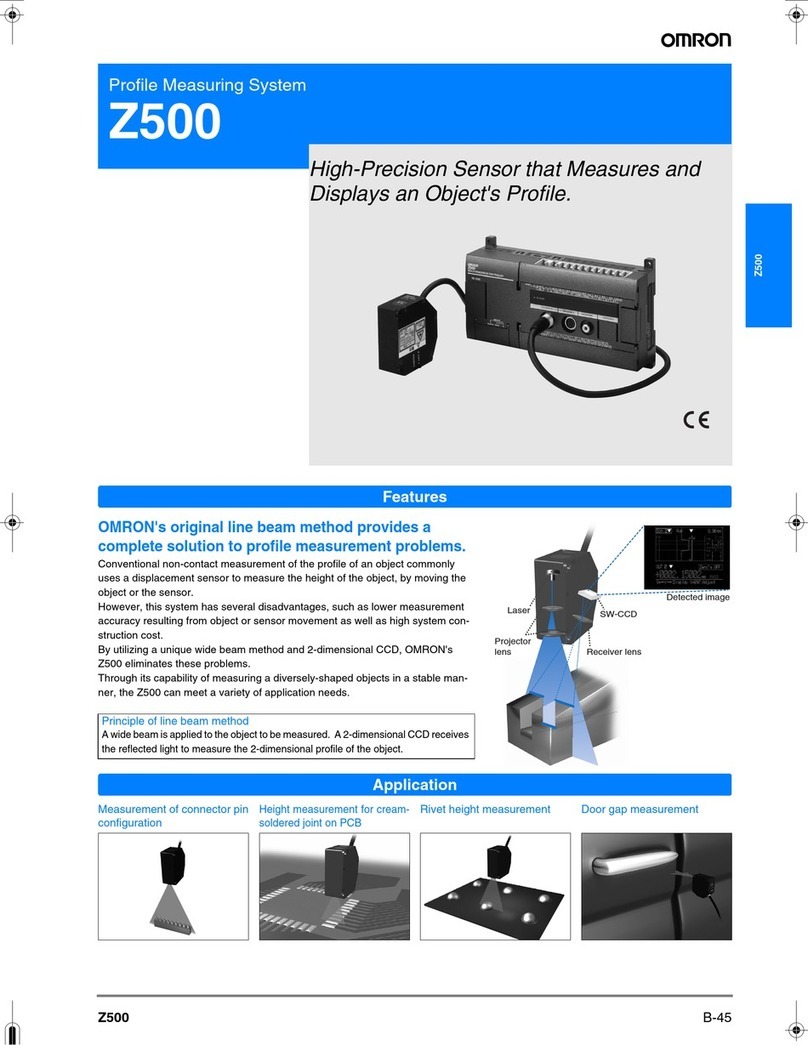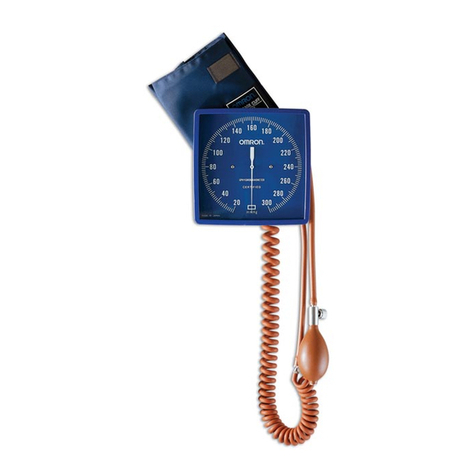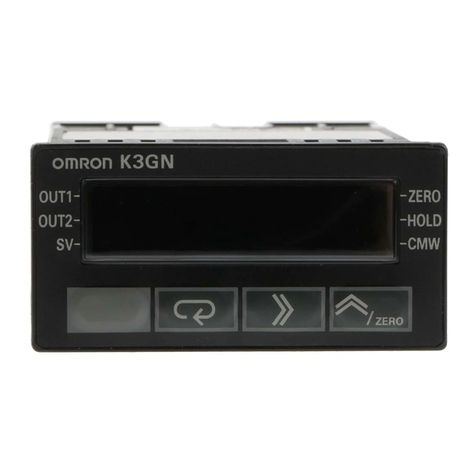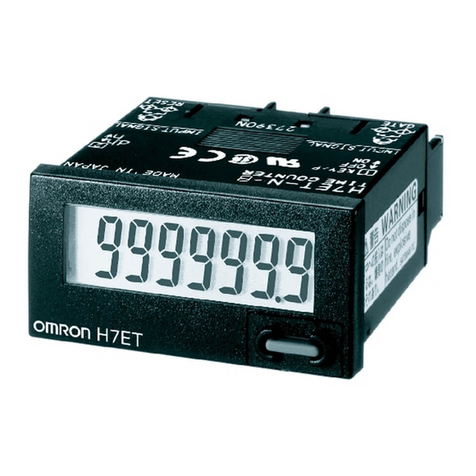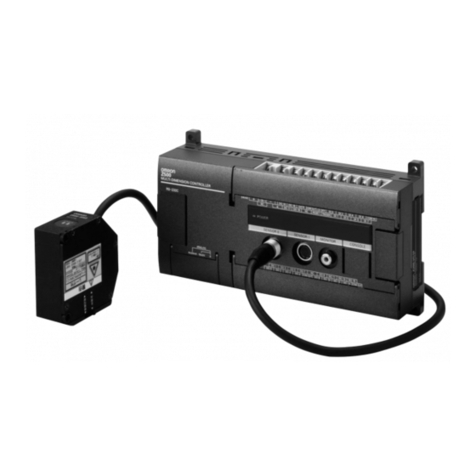C-132 Up/Down Counting Meter K3NC
■Characteristics
■Input/Output Ratings
Relay Contact Output
(Incorporating a G6B Relay)
Transistor Output
Input signal No-voltage contact (30 Hz max., ON/OFF pulse width: 15 ms min.)
Voltage pulse (50 kHz max., ON/OFF pulse width: 9 µs min., ON voltage: 4.5 to 30 V/OFF voltage: −30 to 2 V)
Open collector (50 kHz max., ON/OFF pulse width: 9 µs min.)
Connectable Sensors
ON residual voltage: 3 V max.
OFF leakage current: 1.5 mA max.
Load current: Must have switching capacity of 20 mA min.
Must be able to dependably switch a load current of 5 mA max.
Input mode Up/Down B (individual inputs), Up/Down C (phase difference inputs)
Output mode ALL-H/ALL-L
Max. displayed digits 5 digits (−19999 to 99999)
Display 7-segment LED
Polarity display “−” is displayed automatically with a negative input signal.
Zero display Leading zeros are not displayed.
Prescale function Programming via front-panel key inputs. (0.0001 x 10−9 to 9.9999 x 109, decimal point can be set freely)
Can be set using prescale value teaching.
External control RESET: 16 ms max. (external reset signal)
COMPENSATION: 16 ms max. (external compensation signal)
BANK 1, 2: 100 ms max. (bank switching time)
Up to 4 set value or prescale value banks available
Other functions Variable linear output range (for models with linear outputs only)
Remote/Local processing (available for communications output models only)
Counting value reset with front panel keys
Security
Memory power failure
Output configuration Relay contact output (5 outputs)
Transistor output (NPN and PNP open collector), BCD (NPN open collector)
Parallel BCD (NPN open collector) + transistor output (NPN open collector)
Linear output (4 to 20 mA, 1 to 5 V) + transistor output (NPN open collector)
Communication functions (RS-232C, RS-485, RS-422)
Communication functions (RS-232C, RS-485, RS-422) + transistor output (NPN open collector)
Delay in comparative
outputs 1 ms max. (at transistor output),
10 ms max. (at relay output)
Linear output response time 20 ms max.
Degree of protection Front panel: NEMA4 for indoor use (equivalent to IP66)
Rear case: IEC standard IP20
Terminals: IEC standard IP00
Memory protection Non-volatile memory (EEPROM) (possible to rewrite 100,000 times)
Item Resistive load (cosφ= 1) Inductive load (cosφ= 0.4, L/R = 7 ms)
Rated load 5 A at 250 VAC; 5 A at 30 VDC 1.5 A at 250 VAC, 1.5 A at 30 VDC
Rated carry current 5 A max. (at COM terminal)
Max. contact voltage 380 VAC, 125 VDC
Max. contact current 5 A max. (at COM terminal)
Max. switching capacity 1,250 VA, 150 W 375 VA, 80 W
Min. permissible load
(P level, reference value) 10 mA at 5 VDC
Mechanical life 50,000,000 times min. (at a switching frequency of 18,000 times/hr)
Electrical life
(at an ambient temperature of 23°C) 100,000 times min. (at a rated load switching frequency of 1,800 times/hr)
Rated load voltage 12 to 24 VDC +10%/-15%
Max. load current 50 mA
Leakage current 100 µA max.


